The Toscana Region of Italy
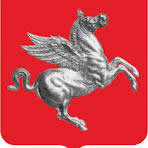
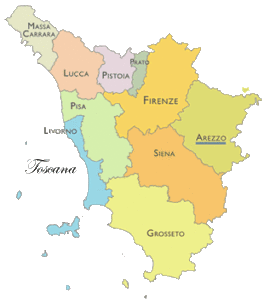 Location: Toscana (Tuscany) is a region in north central Italy. Its land area is about 23,000 square kilometers (8,900 sq mi) with a population of about 3.7 million inhabitants. Its regional capital is Firenze (Florence). It is bordered on the northwest by Liguria, on the northeast by Emilia Romagna; the regions of Umbria and the Marche are on its southeastern border with Lazio on its southern border. The western coast is on the Tyrrhenian Sea.
Location: Toscana (Tuscany) is a region in north central Italy. Its land area is about 23,000 square kilometers (8,900 sq mi) with a population of about 3.7 million inhabitants. Its regional capital is Firenze (Florence). It is bordered on the northwest by Liguria, on the northeast by Emilia Romagna; the regions of Umbria and the Marche are on its southeastern border with Lazio on its southern border. The western coast is on the Tyrrhenian Sea.
Climate: Toscana’s mild climate is one of its most attractive features. It has seasonal variations, but the climate remains consistently temperate. At the shore and in the valleys, the summers are hotter than in the hilly areas, where the climate is very continental – rain falls are more often. The summers in Toscana lack rain and are very hot, especially in the valleys. Spring (April and May) and Autumn (October and November) are rainy, but there are still dry, sunny days. The winter brings sunny, mild days but the nights are very cold. The hottest month is July with temperatures from 23°C up to 40°C. In January, the coldest month, the temperature is about 7°C at the shore, and 3,5°C to 5,5°C inland, and in the mountainous areas.
Geography: The landscape of Tosca, pictured in many fine Renaissance paintings, is unique with fields interrupted by lines of cypress trees, amidst green hilly tufts stretching to high mountains. The soil is fertile, especially in the Arno River valley and the Maremma, a coastal strip. The Apennine Mountains are in northern and eastern Toscana with the Alpi Apuane in the northwest, where the famous Carrara marble is quarried. There are also mountains in the south of Toscana. Along the low lying sandy northern coast, pine trees present a border for the beaches. Toscana’s coastline offers great variety, from sandy beaches to rocks with hidden coves stretching from Marina di Carrara to Argentario. The best sandy beaches extend from Marina di Carrara to Livorno, and from a few kilometers south of Livorno to Piombino, the gulf of Fallonica, and from Castiglione della Pescaia to the Argentario.
History: The Etruscans were the first inhabitants of Toscana, dating from about the 7th century B.C. They ruled until the 5th century B.C. when the power that conquered the known world conquered them. Toscana was ruled by Rome for many centuries. In the Middle Ages, it was invaded by diverse conquerors, establishing Toscana as a Duchy whose capital was Lucca. In this time period, many castles, abbeys and monasteries were built, and the major towns began to grow demographically turning themselves into communes independent of the Holy Roman Empire. In the Renaissance period, Florence(Firenze), Toscana’s capital, extended its dominion over the other towns of Pisa, Lucca, Livorno and Arrezzo and became the cultural center of Europe. Toscana led Europe back to civilization. Later, it was ruled by Lorenzo di Medici and the Medici family through the great Renaissance. Conquered by Napoleonic France in the late 18th century, it became part of the Italian Republic in the 19th century.
Culture: Toscana is renowned for its distinctive landscapes, its unprecedented artistic legacy and unequaled influence on western culture. It is generally regarded as the true origin of the Italian Renaissance, and has produced some of the most influential people in the history of arts and sciences, including Petrarch, Dante, Botticelli, Michelangelo, Leonardo da Vinci, Galileo Galilei, Amerigo Vespucci, Luca Pacioli and Puccini. The region has numerous museums (the Uffizi, the Pitti Palace and the Chianciano Museum of Art). Toscana also has a unique culinary tradition, and is famous for its wines (Chianti, Vino Nobile di Montepulciano, Morellino di Scansano and Brunello di Montalcino).
Six Tuscan localities have been designated World Heritage Sites: the historic center of Florence (1982), the historical center of Siena (1995), the square of the Cathedral of Pisa (1987), the historical center of San Gimignano (1990), the historical center of Pienza (1996) and the Val d’Orcia (2004). It has over 120 protected nature reserves. Its capital city, Florence (Firenze), is a very popular tourist destination, attracting about 10 million tourists every year. Toscana is probably one of the most visited areas in Italy..
Travel by Air:
Toscana has two international airports, the Galileo Galilei International Airport in Pisa and Amerigo Vespucci Airport, also known as Peretola, in Florence city. Located only 80 km apart, the Pisa airport is the larger of the two airports…. Both airports handle flights to major European cities. Pisa handles the bulk of European scheduled flights so it might be easier to find flights landin in Pisa.
The Amerigo Vespucci Airport, the only airport in Florence, is just 3 miles away from the city center. As a small airport, it hosts many international flights and covers many important routes – both with major and low-cost airlines. About 3 million passengers land here each year. It is great for those who plan to visit the historic center of Florence and adjacent smaller villages. A taxi will cost about $17 or one can choose the airport shuttle bus for about $4 to the Santa Maria Novella train station in the city center. There is also the Tramvia which goes from the airport to the center city.
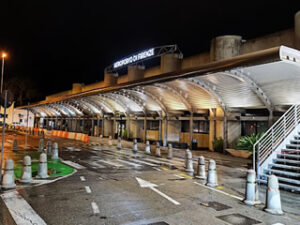
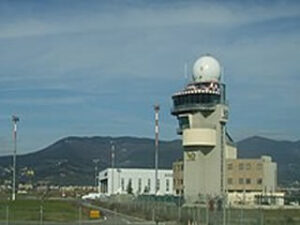
The Galileo Galilei Airport is considered to be the busiest airport of Tuscany with more than 5 million passengers per year. It gives access to the center of Pisa and northern Tuscany towns (Lucca, Firenze and Viareggio) in less than 1 hour because of the multiple means of transport offered. You can rent a car; take a local bus or a People Mover. The latter is an automatic shuttle, which will bring you to Pisa Centrale station in less than 5 minutes. A great option if you are traveling from Europe or the USA!
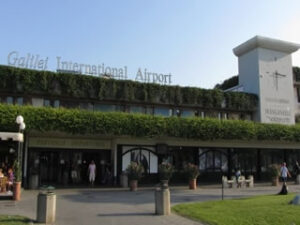
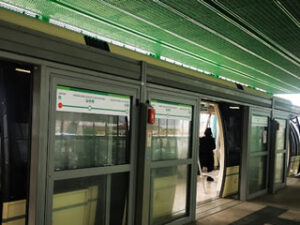
Travel by Train
Santa Maria Novella Train Station
Santa Maria Novella station represents one of the most important architectural breakthroughs. The current station was opened on October 30th 1935. A great atrium covered by the characteristic glass cascade and a central gallery, mirrors the one found in Rome with the same functions. The new station was built outside Santa Maria Novella church from which it takes its name. It’s a masterpiece of rationalism and one of the most important landmarks in Italy’s modern architecture.
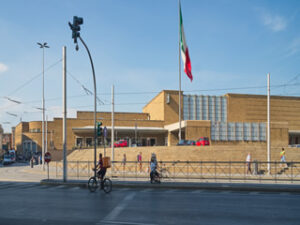
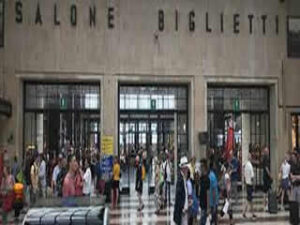
Florence (Firenze) is on the principal Italian train route between most European capitals and Rome, and within Italy it is served frequently from Milan, Venice, and Rome by Intercity (IC) and nonstop trains, and Frecciarossa and Italo. Trains with a million passengers a month run on the high speed line connecting Turin to Salerno, Northern to Southern Italy.
High-speed trains in Italy offer travelers one of the most sophisticated and extensive rail networks in the world. For intercity travel in Italy, Trenitalia and Italo are the train companies you want to choose. While the former is the national system running both high-speed and regional routes, the latter is a recent private competitor offering high-speed train services on several lines.
“Le Frecce” (meaning The Arrows) are a series of modern high-speed trains, operated by Trenitalia. All “Le Frecce” trains offer a greater level of service and greater comfort compared to the Intercity trains and the regional ones, but they differ in their connections and the top speed reached. “Le Frecce’’ trains are split into two categories –Frecciarosso and Frecciargento: Frecciarossa trains make 187 daily connections and can reach a top speed of 300 km/h. The Frecciargento trains offer 48 daily connections and can reach a maximum speed of 250 km/h.
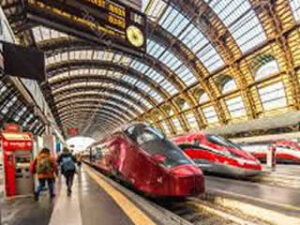
All of Italo’s trains are considered high-speed trains. Operated by a second railway company in Italy known as NuovoTrasporto Viaggiatori (NTV), Italo is among the world’s newest high-speed trains, connecting major Italian cities such as Florence, Rome, Milan and Naples. They are able to reach a top speed of 360 km/h, though it’s often limited to 250 km/h (155 mph) on the Italian railway network. These trains connect Turin – Milan – Venice in just over 3 hours and can cover the Milan – Rome journey in just 2h and 40m. Italo also connects to cities like Vibo Valentia in Calabria and Messina in Sicily.
The Florence tramway called “tramvia” is an important part of the light rail network consisting of two operational lines – one to Scandici and the other to the airport from the train station in Florence or from the airport to the center city of Florence. This trip takes about 15 minutes.
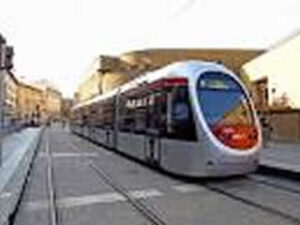
The new Florence tramway system is a faster and more regular system of transportation with less environmentl impact. Florence Tramway System, integrated with the railway and bus system, represents a new mobility concept where public transport is going to be the leader.
A normal ticket, valid for 90 minutes, costs €1, 20 if you buy them in advance. They can be purchased at Tabacco stores or newstands/card stores. Depending on the length of your stay it is also possible to buy tickets that are valid for 24 hours, 3 days or a month.
Travel by Car
Rental cars are available at the airport and in the center city. Travel by car is prohibited in the center city, but there are extensive bus routes and taxi’s available for hire. Of course, visiting the region by car is very convenient, although expensive.
Toscana is filled with the history, art and culture of Italy, after all it was the seat of the Renaissance. There are innumerable places and highlights that reflect the great importance of this Italian region. In fact, there are too many to list here. Toscana is known for its spectacular cities each one unique in its own right, featuring great museums, great wine and food, spectacular medieval hill towns, beaches and beautiful countryside. It is difficult to narrow down “highlights” because everywhere you look is a “highlight”. You will also find more specific information about sites not listed here under the tab “Cities” on our menu.
Firenze (Florence)
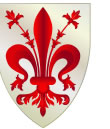 Firenze is the capital of the region of Toscana and probably one of the most visited cities in Italy, noted as the seat of the Renaissance; for its Renaissance architecture, art, its Duomo (Cathedral) and Baptistry. It is the city of Michelangelo and many important artists including Donatello, daVinci, Giotto, Ghiberti and others whose works adorn the city to this day.
Firenze is the capital of the region of Toscana and probably one of the most visited cities in Italy, noted as the seat of the Renaissance; for its Renaissance architecture, art, its Duomo (Cathedral) and Baptistry. It is the city of Michelangelo and many important artists including Donatello, daVinci, Giotto, Ghiberti and others whose works adorn the city to this day.
It is also noted for its palaces including the Pitti Palace, the Palazzo Strozzi, the Medici Palace and many other important works, as well as a leading source of fashion and leather goods. There is also the Ponte Vecchio famous for its jewelry and gold works of art. More on Firenze under “Cities” tab.
View of Firenze city with Duomo Ponte Vecchio
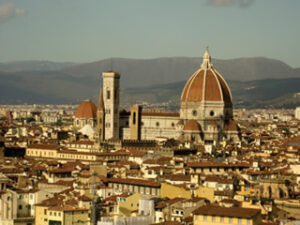
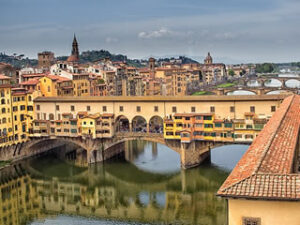
Pisa
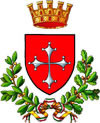
Pisa is the city famed for its Leaning Tower and Piazza dei Miracoli. There many historic churches, palaces and bridges across the Arno river. It is also the home of the University of Pisa founded in the 12th century. Some important sites include Museo dell’Opera del Duomo, Villa di Corliano, Palazzo delle Vedove, Borgo Stretto, Medici Palace, Palazzo Gambacorti, Palazzo Agostini, Palazzo Reale, Church of San Nicola, Church of Saint Francis. So many works of art by famous Renaissance artists are found in Pisano churches and palaces. Surrounded by Medieval walls, Pisa was the birthplace of the early physicist Galileo Galilei. It also has a long history originating with the Etruscans. It played an important maritime role and maintained trade relations with other Mediterranean civilizations. The Romans referred to it as an “old city” and a great center. In modern times, Pisa has remained a great tourist city!
Medieval Walls Piazza dei Miracoli
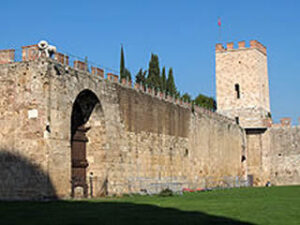
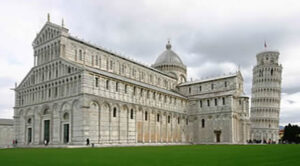
Siena
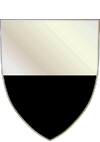 Siena is a beautiful medieval town about an hour by car from Firenze and can also be reached by train. It is the 12th largest city by population in the region. An ancient city founded by the Etruscans, it is a major banking center since the 13th century. It is divided into ward-centric areas called contradas each represented by a specific animal or mascot. Each of the 17 contradas participate in the Palio, a yearly horse race in the Piazza del Campo (main square) known throughout the world. It is not your usual horse race with riders riding bareback and dressed in the costume of the contrada. There are many sights to see including: the Siena Cathedral, a 12th century masterpiece, with its relics of St. Catherine of Siena, the Piazza del Campo with its Torre del Mangia and the Palazzo Publico, the Palazzo Salimbeni, the original headquarters of the Monte dei Paschi di Siena, one of the oldest banks in Europe. There are also many churches, palaces and museums to visit as well as a historic Synagogue, and the University of Siena.
Siena is a beautiful medieval town about an hour by car from Firenze and can also be reached by train. It is the 12th largest city by population in the region. An ancient city founded by the Etruscans, it is a major banking center since the 13th century. It is divided into ward-centric areas called contradas each represented by a specific animal or mascot. Each of the 17 contradas participate in the Palio, a yearly horse race in the Piazza del Campo (main square) known throughout the world. It is not your usual horse race with riders riding bareback and dressed in the costume of the contrada. There are many sights to see including: the Siena Cathedral, a 12th century masterpiece, with its relics of St. Catherine of Siena, the Piazza del Campo with its Torre del Mangia and the Palazzo Publico, the Palazzo Salimbeni, the original headquarters of the Monte dei Paschi di Siena, one of the oldest banks in Europe. There are also many churches, palaces and museums to visit as well as a historic Synagogue, and the University of Siena.
Palazzo Publico Piazza del Campo
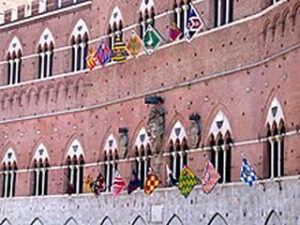
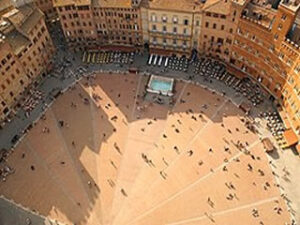
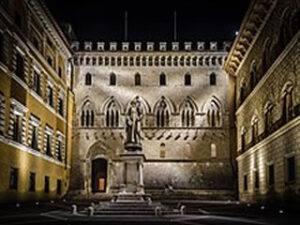
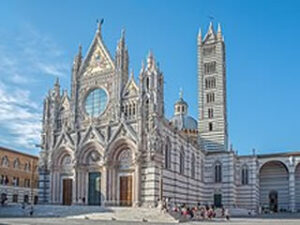
Palazzo Salimbene Duomo di Siena
Lucca
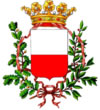 Lucca was certainly settled by the Etruscans, later established by the Romans with possible traces of earlier Ligurian origins dating from the 3rd century BC. It boasts intact Renaissance-era walls surrounding its perimeter as well as other historic buildings located in the city center. . The walls remain intact even though the city has expanded and modernized and they are great for cycling or walking. Historic buildings include the Piazza dell’Anfiteatro originating in the 1st century A.D., the Giungi Tower dating from the 13th century and the Cathedral of San Martino begun in 1063. Thanks to the “Holy Face of Jesus”, an 8 ft. tall wooden carving of Jesus crucified located in the cathedral of San Martino, Lucca became one of the main destinations on the major pilgrimage route to Rome. In the Middle Ages, Medieval legend says that the cross was sculpted by Nicodemus who assisted Joseph of Arimathea in placing Christ in the tomb after the crucifixion.
Lucca was certainly settled by the Etruscans, later established by the Romans with possible traces of earlier Ligurian origins dating from the 3rd century BC. It boasts intact Renaissance-era walls surrounding its perimeter as well as other historic buildings located in the city center. . The walls remain intact even though the city has expanded and modernized and they are great for cycling or walking. Historic buildings include the Piazza dell’Anfiteatro originating in the 1st century A.D., the Giungi Tower dating from the 13th century and the Cathedral of San Martino begun in 1063. Thanks to the “Holy Face of Jesus”, an 8 ft. tall wooden carving of Jesus crucified located in the cathedral of San Martino, Lucca became one of the main destinations on the major pilgrimage route to Rome. In the Middle Ages, Medieval legend says that the cross was sculpted by Nicodemus who assisted Joseph of Arimathea in placing Christ in the tomb after the crucifixion.
Renaissance Walls Giungi Tower
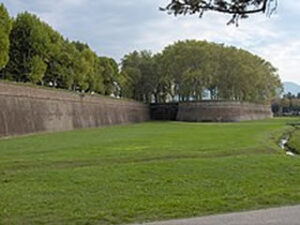
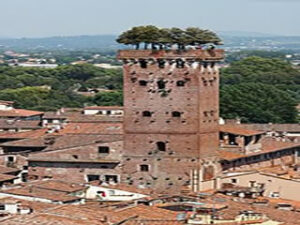
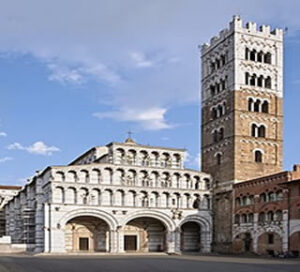
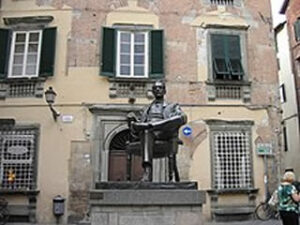
Cathedral of San Martino Statue of Giacomo Puccini
There are many palaces, villas and museums to be seen and restaurants in which to enjoy the local cuisine. Lucca is the birthplace of several world-composers including Giacomo Puccini, Alfredo Catalani and Luigi Boccherini. About an hour from Firenze, Lucca is accessible by car, train or bus.
Cortona
 Cortona, in the heart of Toscana, is about 1 hour and 23 minutes by car from Firenze; it is also accessible by train and bus. It is a Tuscan hill town which achieved fame through the book “Under the Tuscan Sun” written by Frances Mayes and later made into a popular movie. Previously it was somewhat unknown. It has a decidedly Etruscan origin and is still surrounded by 3,000 year old Etruscan walls. It has a magnificent history through the Roman period and into the Renaissance. Cortona is noted for its Etruscan portal, the Porta Bifora and its Roman gate, Porta Sant’agostino, as well as Etruscan tombs and the funerary altar of Tumulus II of the Sodo. It became a Roman colony, and later a Ghibelliaian city (Renaissance) and eventually sold to the Medici family in 1411. It is near Lake Trasimene where Hannibal ambushed the Roman army in 217BC. There are numerous churches, museums and palazzos with art and artifacts from the Etruscan times through the early Renaissance to modern times.
Cortona, in the heart of Toscana, is about 1 hour and 23 minutes by car from Firenze; it is also accessible by train and bus. It is a Tuscan hill town which achieved fame through the book “Under the Tuscan Sun” written by Frances Mayes and later made into a popular movie. Previously it was somewhat unknown. It has a decidedly Etruscan origin and is still surrounded by 3,000 year old Etruscan walls. It has a magnificent history through the Roman period and into the Renaissance. Cortona is noted for its Etruscan portal, the Porta Bifora and its Roman gate, Porta Sant’agostino, as well as Etruscan tombs and the funerary altar of Tumulus II of the Sodo. It became a Roman colony, and later a Ghibelliaian city (Renaissance) and eventually sold to the Medici family in 1411. It is near Lake Trasimene where Hannibal ambushed the Roman army in 217BC. There are numerous churches, museums and palazzos with art and artifacts from the Etruscan times through the early Renaissance to modern times.
Cortona City Hall Old Roman Gate
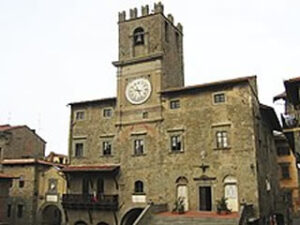
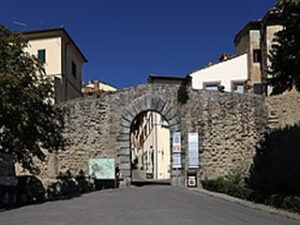
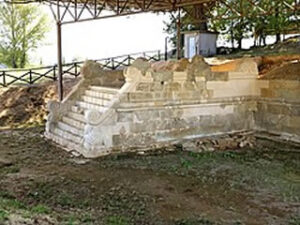
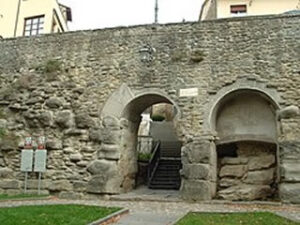
Etruscan Funerary Altar Etruscan City Gate.
San Gimignano
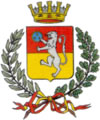
San Gimignano is a small medieval town known for its fourteen surviving towers (essentially tower houses). Located in north central Toscana about 56 minutes by car from Firenze, it can also be reached by bus and train. It is a medieval walled city sitting on a hilltop with picturesque views of the countryside. It is famed for its remarkable skyline with about 14 well-preserved “tower houses” for which it is known internationally. The town originated in the 3rd century BC; a small Etruscan village. In the Middle Ages and the Renaissance era, Catholic pilgrims made their way through San Gimignano to the Vatican and Rome.
The Towers San Gimignano Piazza della Cisterna
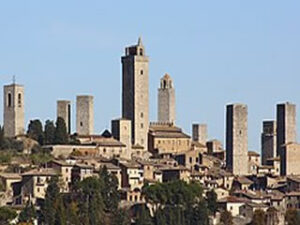
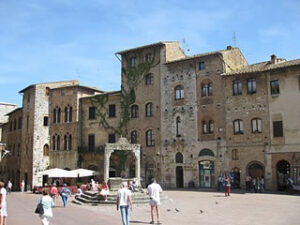
It is acclaimed for its Romanesque and Gothic architecture found in churches which house artworks from many early renaissance artists, and medieval fortifications. The Piazza della Cisterna is the main square, surrounded by medieval homes; and in the center is a well which was the main source of water for the town. At the top of the Piazza Duomo is the Collegiate Church or the Duomo of San Gimignano. Also located in the Piazza Duomo is the Palazzo Comunale, the town hall and seat of authority for the town, dates from the late 13th century. San Gimignano is also known for its saffron and Vernaccia wine.
The Duomo di San Gimignano Palazzo Communale
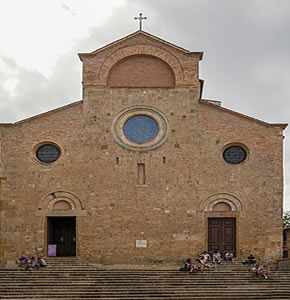
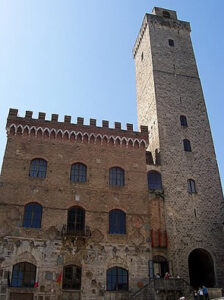
Montepulciano
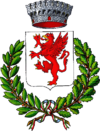 Montepulciano is a beautiful, walled Tuscan hill town, known for its Vino Nobile di Montepulciano, located in southern Toscana about 95 kilometers (77 miles) from Firenze. According to legend it was founded by the Etruscan King Lars Porsena; in Roman times, it garrisoned legions guarding the main road to Rome. There are many early renaissance works of art and works of many noted Italian architects and painters.
Montepulciano is a beautiful, walled Tuscan hill town, known for its Vino Nobile di Montepulciano, located in southern Toscana about 95 kilometers (77 miles) from Firenze. According to legend it was founded by the Etruscan King Lars Porsena; in Roman times, it garrisoned legions guarding the main road to Rome. There are many early renaissance works of art and works of many noted Italian architects and painters.
The Santa Maria Assunta or the Duomo of Montepulciano is noted for the massive Assumption of the Virgin Triptych painted in 1401 by Taddeo di Bartolo. Below right is the Piazza Grande with its magnificent town hall and well. It is the seat of government for the city.
Santa Maria Assunta Piazza Grande
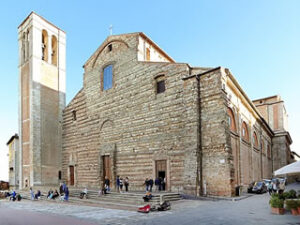
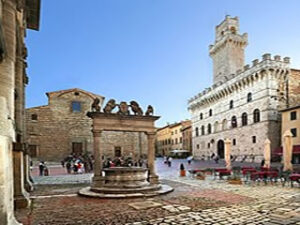
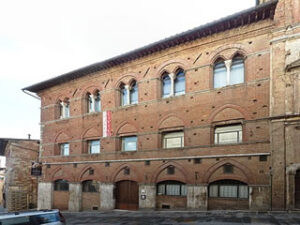
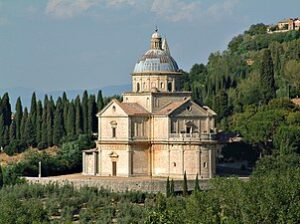
Museo Civico Sanctuary of the Madonna di San Biagio
The Museo Civico di Montepulciano houses a wonderful collection of archeological artifacts, but more importantly exquisite examples of terracotta works by the Della Robbia family. The Sanctuary of the Madonna di San Biagio located outside Montepulciano was designed by Antonio da Sangallo between 1518 and 1545 with a façade of white travertine.
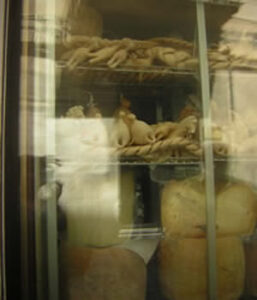
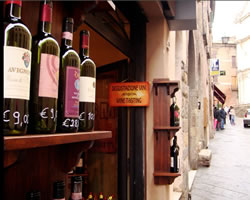
Montepulciano is also noted for its cheeses and its Rosso di Montepulciano wines.
There are too many other highlights to check out in Toscana. Be sure to look under the cities menu for other notable Tuscan cities and towns.
Things to do in Toscana
Toscana is alive with exciting things to do and visit: from its many outstanding cities to its verdant country sides, from the sea to the mountains and in all seasons. Here is a list of our recommendations with short descriptions:
Visit the Chianti region
Sample the wine and visit the vineyards of Chianti, a region of beautiful vineyards and charming hilltop towns that stretches from Florence to Siena and on to Arezzo. About 35 kilometers from Florence, the Chianti region produces some of the best wines in Italy including the Chianti Classico made principally from the Sangiovese grape. The earliest chianti wine dates back to the 14th century. Chianti can be reached by car, and rail and bus from Firenze and major cities of Toscana.
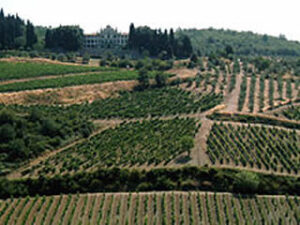
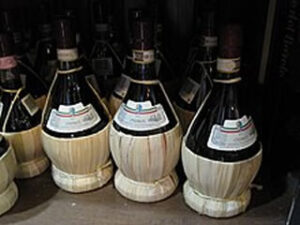
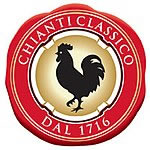
See the Historic Center of Firenze (Florence)
Firenze (Florence) the center of the Renaissance in Europe is not to be missed. There are too many things to see in Firenze. The historic center of the city includes the Duomo (the Cathedral of Santa Maria del Fiore) with its historic dome, campanile (bell tower) by Giotto and its Baptistry with the bronze doors by Lorenzo Ghiberti. Climb to the top of Giotto’s bell tower if you dare! Do not miss the Museum of the Duomo to learn how the dome was built and to examine all the original statues on the façade of the Duomo. The Piazza della Signoria with its Palazzo Vecchio (town hall) designed by Michelangelo; the bell tower offers fantastic, panoramic views of Firenze, the Loggia dei Lanzi with its many sculptures including Cellini’s Perseus with the Head of Medusa and the Rape of the Sabine Women by Giambologna among others, are unforgettable. Visit the Accademia which houses the original Statue of David by Michelangelo. Cross the Ponte Vecchio (old bridge) to admire the opulence of Florentine gold and a fantastic view of the Ponte Santa Trinita, one of the most beautiful bridges across the Arno built by Bartolomeo Ammannati in 1567. Once across the Arno river continue on to the Pitti Palace, the seat of fashion shows in season and the home of the Boboli Gardens.
Facade of Santa Maria del Fiore Palazzo Vecchio
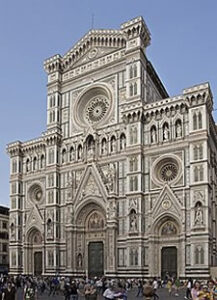
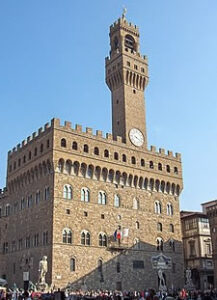
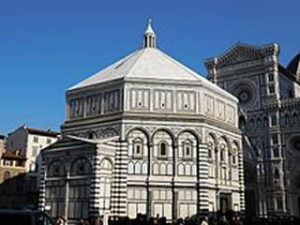 Baptistry
Baptistry
The Loggia Piazza della Signoria
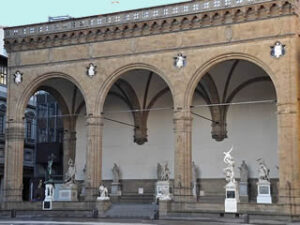
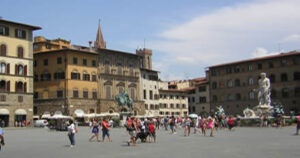
Ponte Santa Trinita`
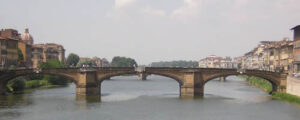
Ponte Vecchio
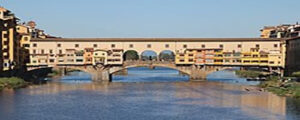
Boboli Gardens Palazzo Piti
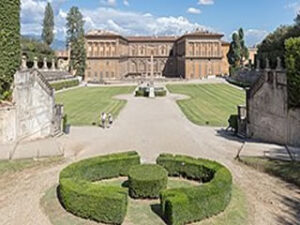
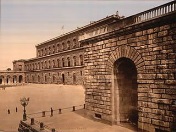
Michelangelo’s David
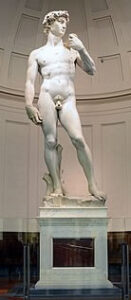 Michelangelo’s David is found in the Galleria dell’Accademia where it was moved in 1873 from the Piazza della Signoria to protect it from the elements. In 1910 a copy was placed in its original location. It is the first larger than life-sized marble statue produced in the early modern era and was unveiled in 1504. It was to become the symbol of Renaissance Florence. Originally it was designed to adorn the façade of the Cathedral of Santa Maria del Fiore along with a series of other statues.
Michelangelo’s David is found in the Galleria dell’Accademia where it was moved in 1873 from the Piazza della Signoria to protect it from the elements. In 1910 a copy was placed in its original location. It is the first larger than life-sized marble statue produced in the early modern era and was unveiled in 1504. It was to become the symbol of Renaissance Florence. Originally it was designed to adorn the façade of the Cathedral of Santa Maria del Fiore along with a series of other statues.
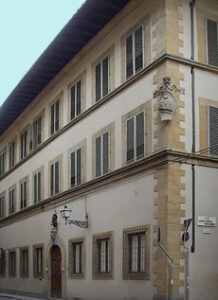
 Casa Buonarroti
Casa Buonarroti
The Casa Buonarroti (right) was the ancestral home of Michelangelo in Firenze. It is now a museum and contains two early sculptures by Michelangelo, family archives, a ten thousand book library and some of Michelangelo’s letters and drawings. There are also painting by Artemisia Gentileschi and other ealy 17th century painters.
Enjoy the panorama of Firenze from Piazzale Michelangelo
The view of Firenze from Piazzale Michelangelo is extraordinarily magnificent. The piazza was dedicated to Michelangelo and displays copies of some of his most famous works including the bronze statue of David and the four allegories of the times of day found in the Medici Chapel of San Lorenzo.
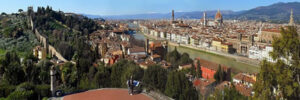
Calcio in Costume
Soccer in medieval costume is played every year on June 25 in the Piazza Santa Croce.
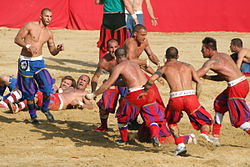
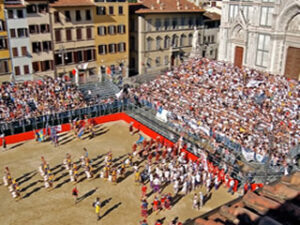
A team from each quartiere of the city competes for the championship. This rivalry began in the Middle Ages and has been repeated every year since. It is a very rowdy time! Tickets are sold years in advance and are very hard to get, so plan way ahead.
Don’t miss the Uffizi Gallery
One of the most import and most visited art museums, the Uffizi is one of the largest and best known in the world especially for its collection of priceless works of art, particularly from the Italian Renaissance. Uffizi meaning “Offices” is named for the offices of renaissance government officials which were housed on its floors. Not to be missed.
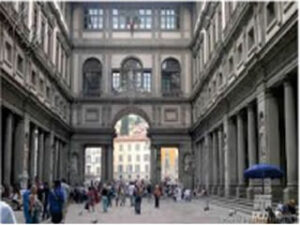
So many things to do in Firenze! Visit Firenze under the “Cities” tab on our menu for other suggestions.
The Palio di Siena
Held in the Campo (main square of Siena), the Palio di Siena is a horse race in which ten horses and riders representing contradas (sections) of Siena compete to win the race. It is usually held 2 times per year on July 2 and August 16. The Corteo Storico, a historical costume parade takes place before the famous horse race and commemorates the ancient institutions, customs and greatness of the Republic of Siena. It is almost impossible to see this race in person, but it is broadcast on Italian TV.
Palio Corteo Storico
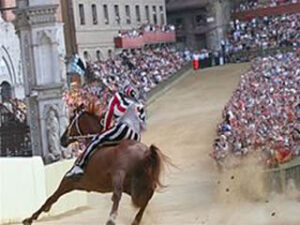
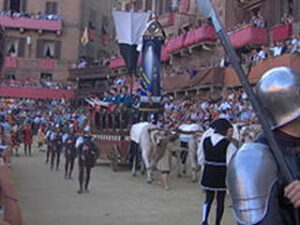
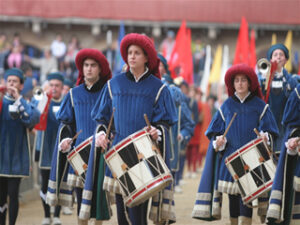
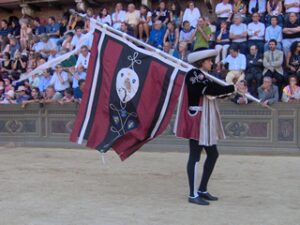
Go Wine Tasting in Val d’Orcia
Visit the wine country including the towns of Montalcino, Pienza and San Quirico d’Orcia. First the town of Montalcino named for a variety of oak tree prominent in the terrain. Built on a high hill, Montalcino overlooks the Asso, Ombrone and Arbia valleys alive with olive trees, vineyards, fields and villages. It is probably of Etruscan origin located about 68 miles from Firenze. It is known for its famous and expensive wines called Brunello di Montalcino, Rosso di Montalcino and Moscadello. There are more than 200 wine producers today and many offer wine tasting in the town.
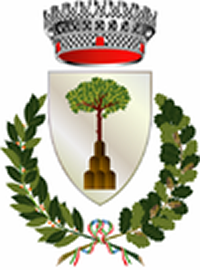
Montalcino is a medieval town with walls and a fortress/castle which can be visited. Inside the walls of the fortress is a wine shop where you can taste and buy the best wines of the region including Brunello.
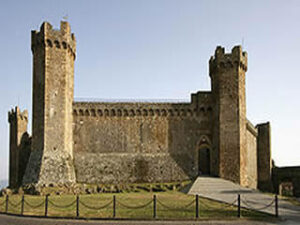
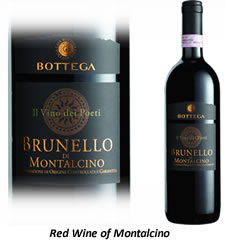
You might like to visit the Abbey of Sant’Antimo (below), a 12 the century monastery and Romanesque church found in the olive groves outside of Montalcino. It contains the relics of Saint Anthimus moved to the abbey in the late 8th century.
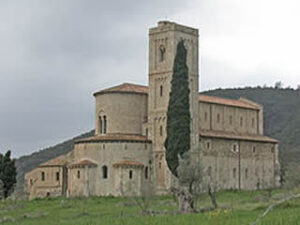
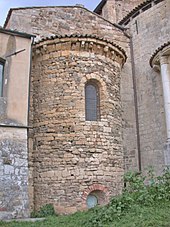
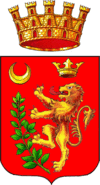
Pienza is situated between Montepulciano and Montalcino. First mention of this town is in the 9th century under a different name, but around 1300 the Franciscans settled there. Noted for its wine and cheeses, Pienza is a lovely hill town in the Tuscan style. Visit the Central piazza to see the town hall and the Palazzo Piccolmini which can be visited. It contains an enclosed Italian Renaissance garden. Drop in to see the Duomo which has a German flavor. On the third side of the piazza is the Palazzo Vescovile built by Cardinale Rodrigo Borgia; it is now a museum with important works and religious artifacts from the 14th and 15th centuries.
Pienza Countryside Duomo di Pienza
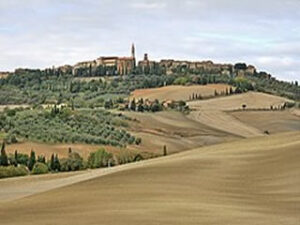
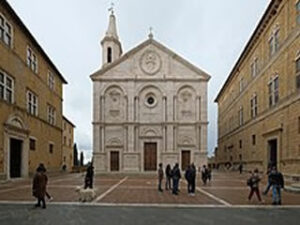
Cheeses of Pienza Piccolomini Gardens

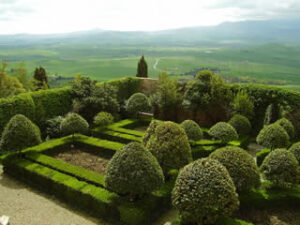
Visit the Thermal Baths of Saturnia
The Thermal Baths of Saturnia or Cascate del Mulino are a group of hot springs ( temperature @ 99.5F) located in Manciano which is a few kilometers from Saturnia. According to Etruscan and Roman legend, the Terme di Saturnia were formed by lightning bolts thrown by Jupiter who missed the target and threw the bolts toward Saturn, forming the baths. The spa is free, but can be very crowded from June to September.
Terme Di Saturnia Cascate del Mulino
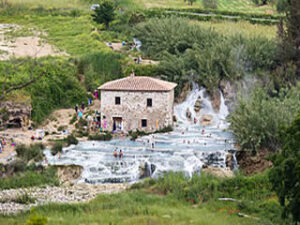
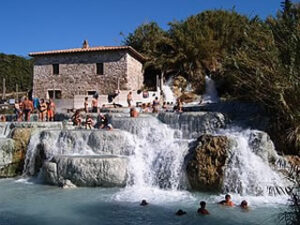
Relax in the Spa at Montecatini Terme
One of the “Great Spa Towns” of Europe, Montecatini Terme offers eleven mineral springs, or you can relax in a sauna or in the healing thermal water, have a mud bath or a beauty treatment! It is an ancient town with evidence of humans in the area from Paleolithic times. It has an expansive history through the Renaissance to modern times. One can also visit Montecatini Alto, with great views, by funicular.
Montecatini Alto Montecatini Thermal Baths
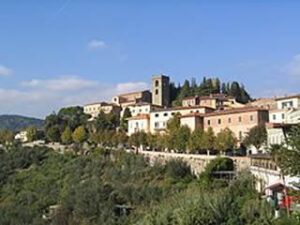
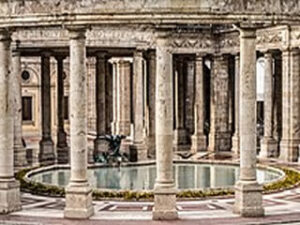
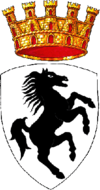
Visit Arezzo
Arezzo, the city of gold, is set on a steep hill about 50 miles southeast of Firenze. A medieval town of Etruscan origin, it is believed that Arezzo was one of the 12 most important Etruscan towns; it was conquered by the Romans in 311 BC. Inside its medieval walls are many art treasures. The Piazza Grande, which was once the marketplace of the city, is now the known for the Vasari Loggia, and the remains of the Communal Palace and the Palazzo del Popolo.
Churches to visit include Santa Maria della Pieve a Romanesque church with a massive square bell tower. The Basilica of San Domenico is renowned for the medieval crucifix painted by Cimabue in 1265. The Basilica of San Francesco houses the “History of the True Cross” by Piero della Francesco (1453).
Piazza Grande Vasari Loggia
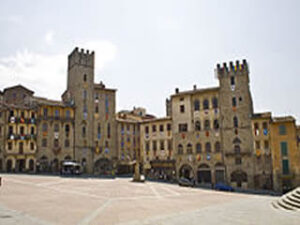
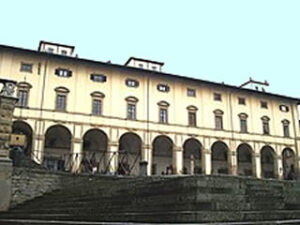
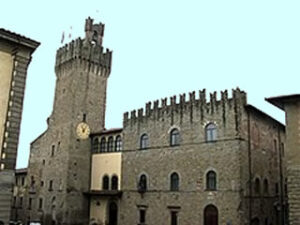
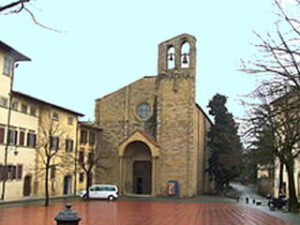
Palazzo Communale Basilica di San Domenico
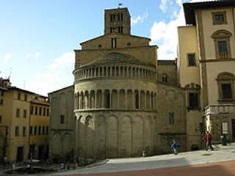
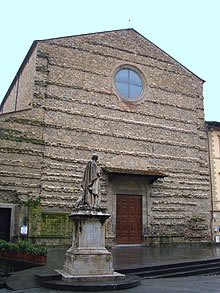
Santa Maria della Pieve Basilica di San Francesco
Wander about in the Roman amphitheater. If you are lucky you may be in Arezzo for the historical reenactment of the Saracen Joust taking place every year on the next to the last Saturday of June.
Saracen Joust Roman Amphiteater
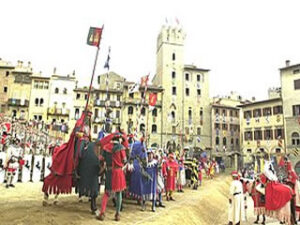
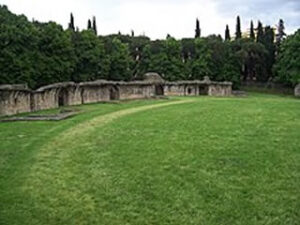
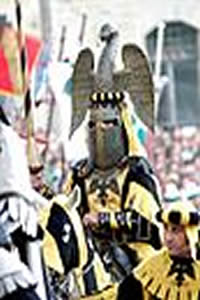
Enjoy Surf and Sun on the Beaches of Toscana
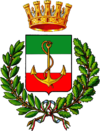 The beach resort of Viareggio is located on the coast of the Tyrrhenian Sea renowned for its Carnival of Viareggio held in July and August boasting magnificent papier-mâché’ floats. Walk along its “passeggiata a mare” (boardwalk along the sea) or along the Burlamacca canal with its old lighthouse or just relax on the beach!
The beach resort of Viareggio is located on the coast of the Tyrrhenian Sea renowned for its Carnival of Viareggio held in July and August boasting magnificent papier-mâché’ floats. Walk along its “passeggiata a mare” (boardwalk along the sea) or along the Burlamacca canal with its old lighthouse or just relax on the beach!
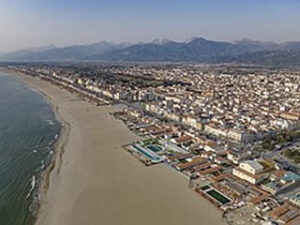
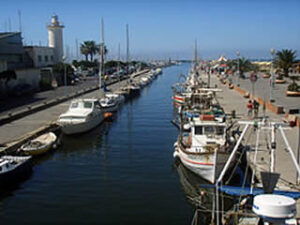
Castiglione della Pescaia
Located in Toscana in central Italy, Castiglione della Pescaia is a modern town that grew up around a medieval 12th century fortress. Its attrractions include fantastic beaches, natural parks, biking trails, historical Etruscan archeological sites, a panoramic medieval hamlet and a natural reserve.
Hilltop Fortress Beach
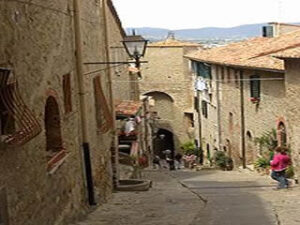
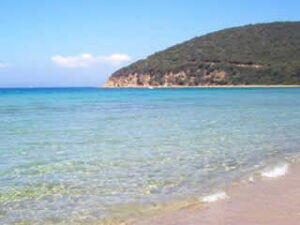
There are many other seaside resorts in Toscana, too many to list here.
Explore the Fabulous Islands of Toscana
Enjoy the spectacular beaches of Giglio, Pianosa and Giannutri which can be reached by boat from Porto Santo Stefano. These islands have many exciting places to see Including the Forte Teglia, Palazzo della Specola on Pianosa, the lighthouse of Giannutri and its Roman villa, and the Giglio lighthouse and the Etruscan shipwreck. There is much Etruscan and Roman history on these islands to be explored for those who are interested in ancient history.
Coast of Giannutri Giannutri
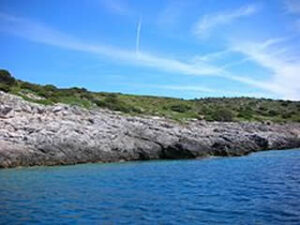
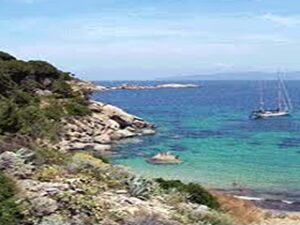
Porto di Pianosa Forte Teglia, Pianosa
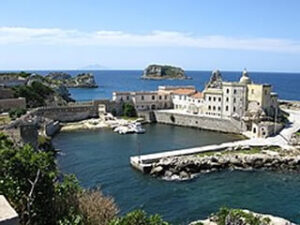
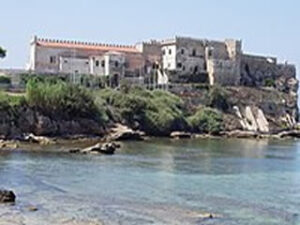
Giglio Porto Giglio Lighthouse
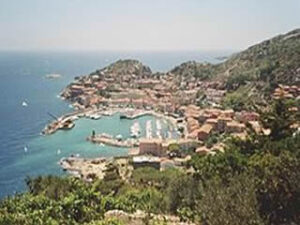
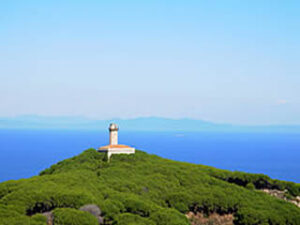
Don’t Miss Napoleon’s Exile Island, Elba
Elba Island is connected to the mainland by 4 ferries offering routes from Piombino to Portoferraio on Elba. Napoleon was exiled to Elba by the British in 1804 after he abdicated the throne of France. Visit Napoleon’s residence, walk in the small towns on the island, hike, bike, swim or snorkel. The capital city is Portoferraio.
Cavo Beach Elba – Enfola
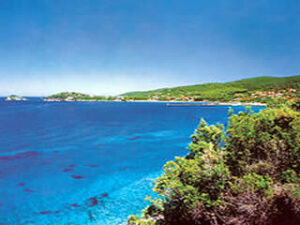

Portoferraio
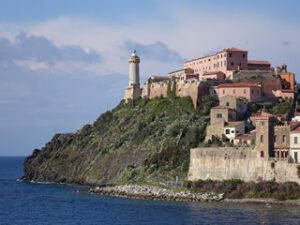
There are so many other things to do in Toscana that it is impossible to list them all here, but from time to time some will change and some will be added. Be sure to check under the Cities tab for other Toscana towns of note.
